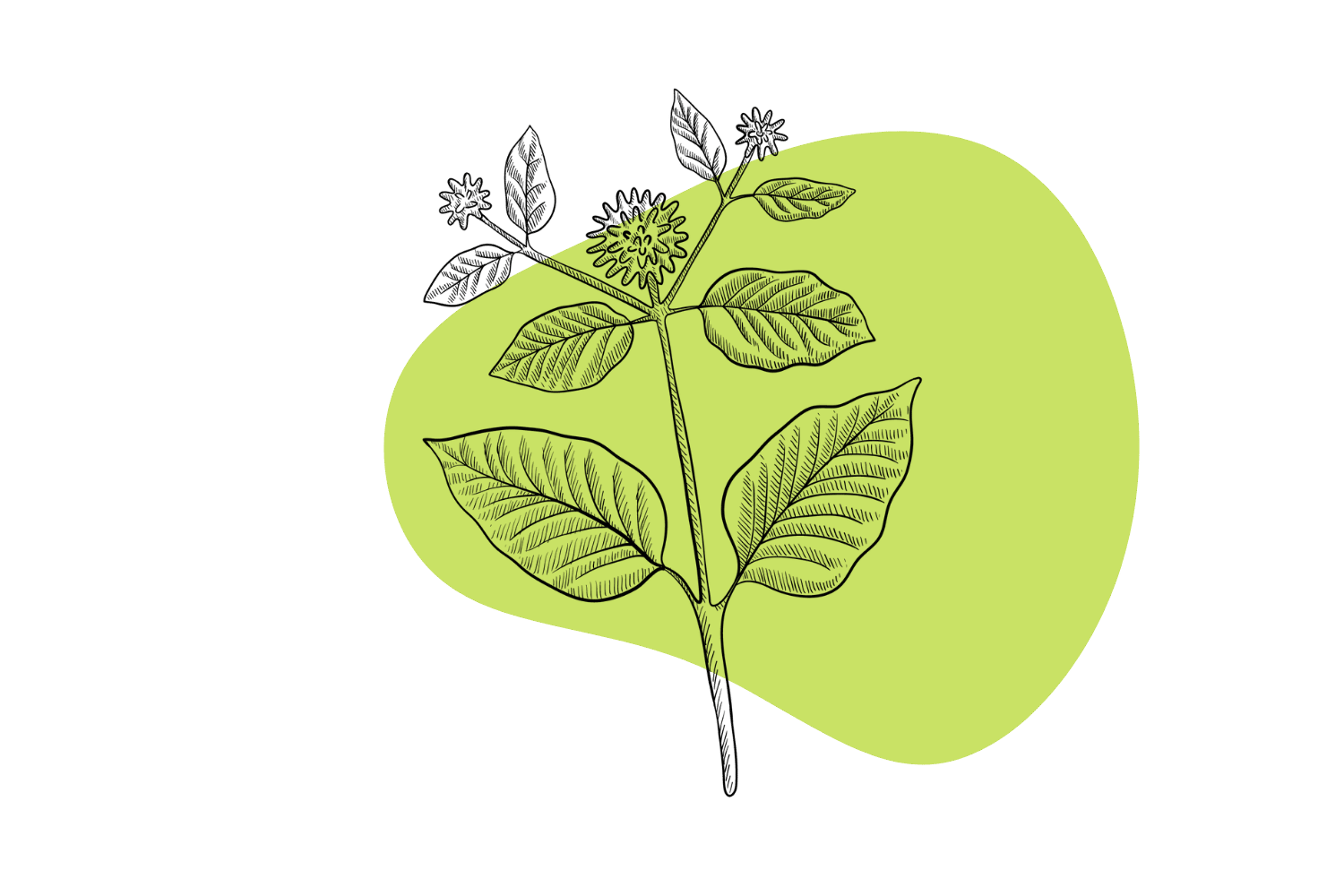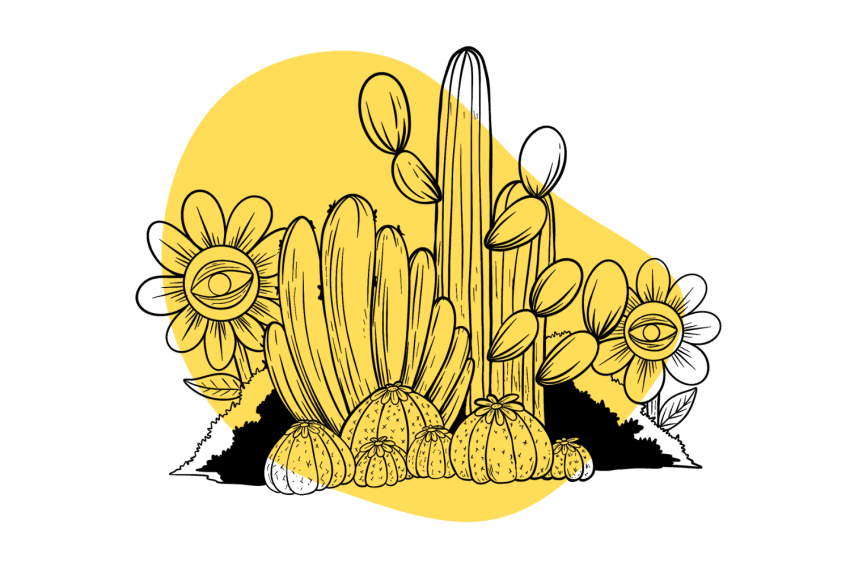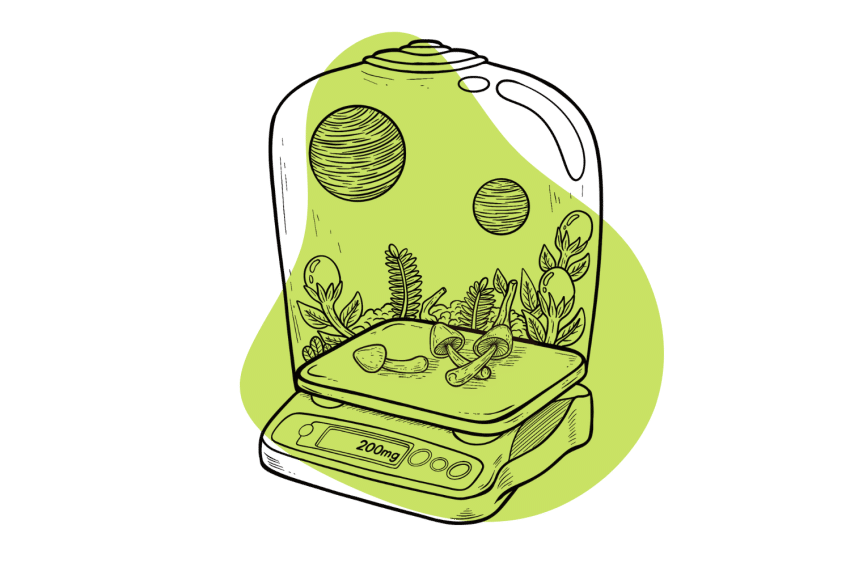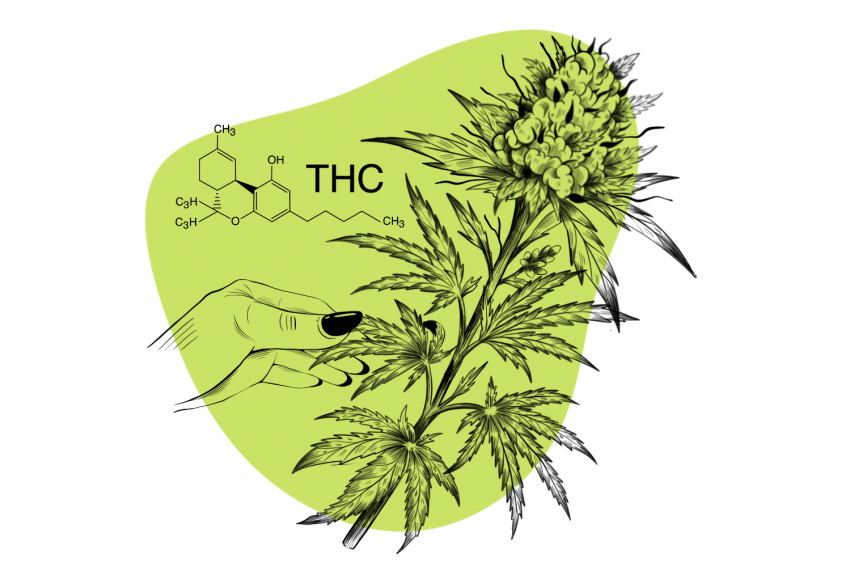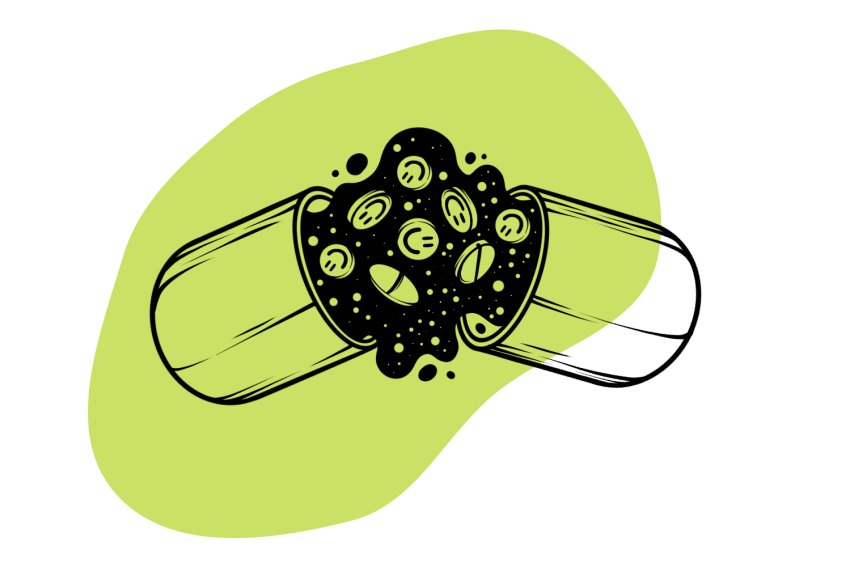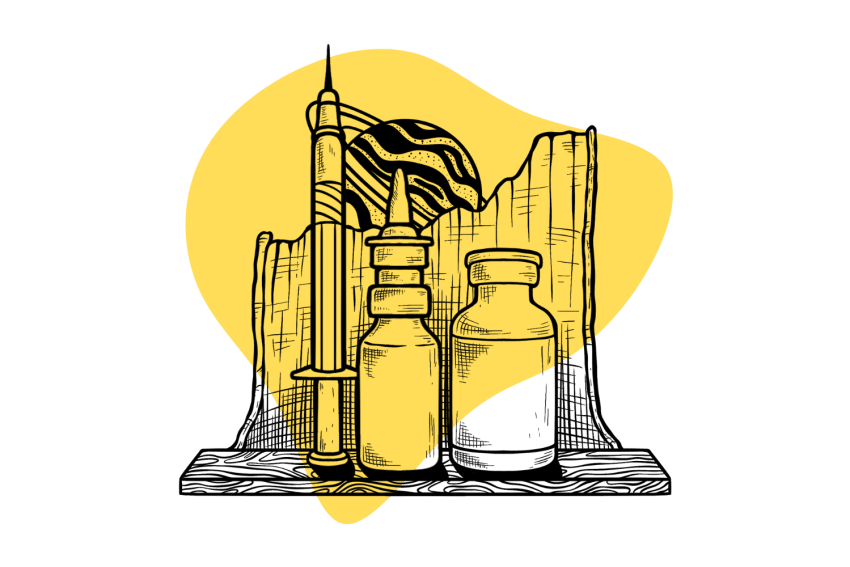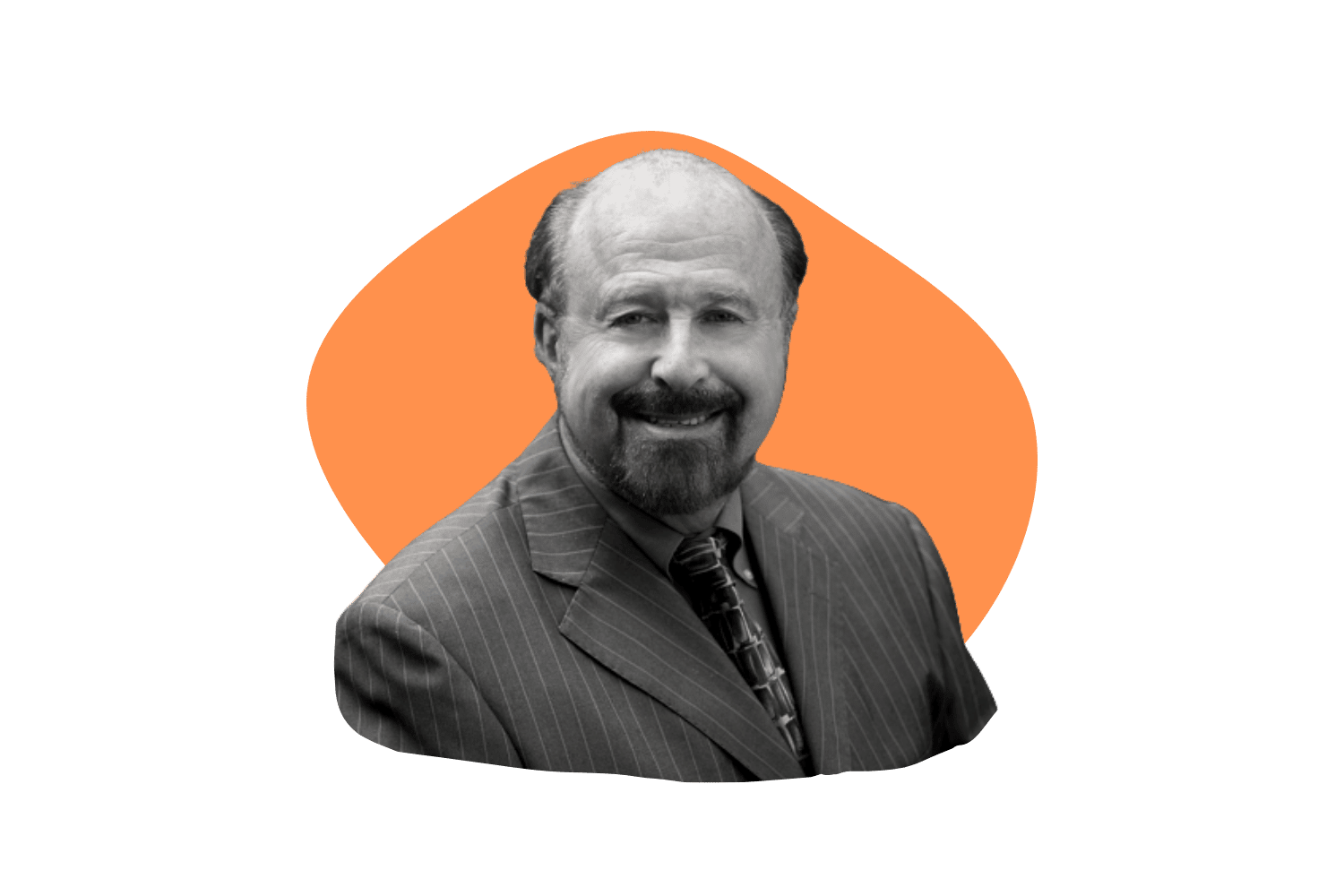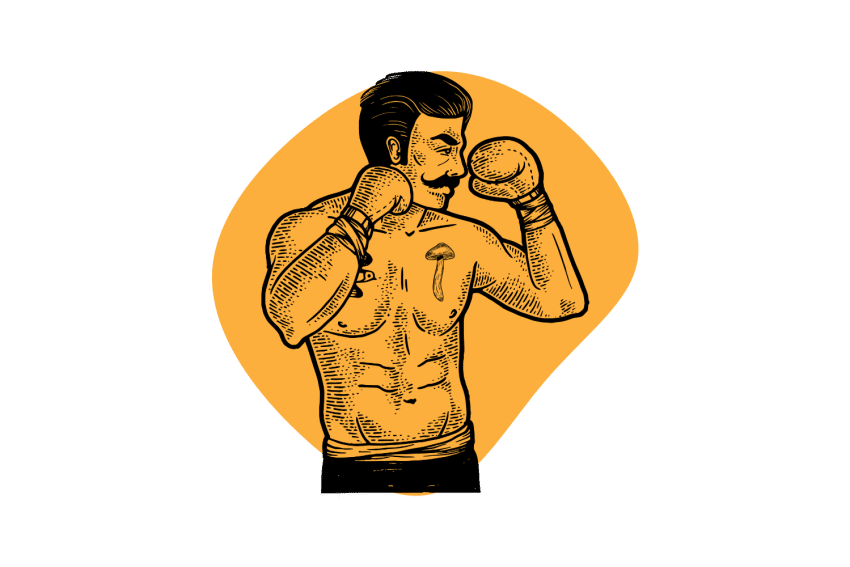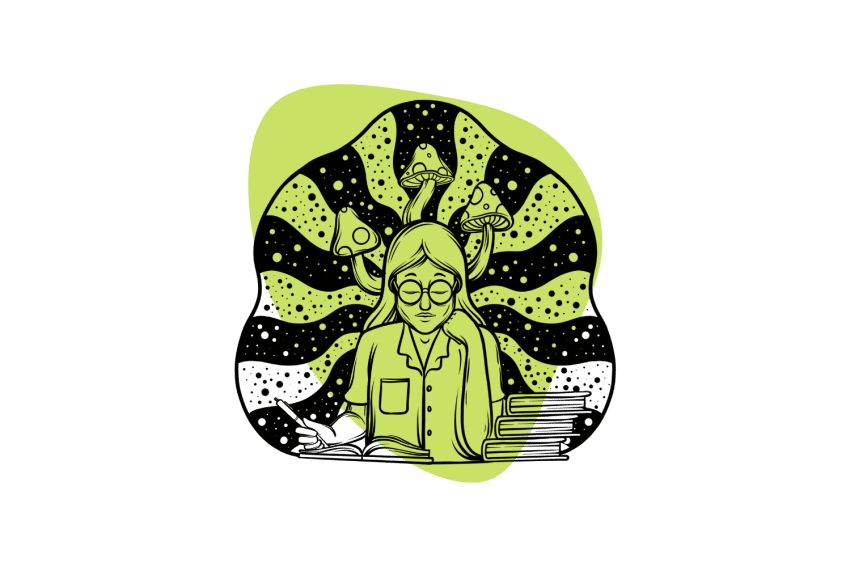How Microdosing Magic Mushrooms May Be the Future of Migraine Treatment
Despite the lack of research, many migraine sufferers are seeing positive results in their symptoms after taking microdoses of magic mushrooms. Here’s how it works.
People are raving at the ability of magic mushrooms taken in small, su-perceptual doses (called microdoses) to boost their creativity, be more productive, cultivate healthy habits, and reduce feelings of anxiety.
But could these psychedelic fungi also work for treating one of the most misunderstood neurological conditions?
We’re talking about migraines.
While the idea of microdosing shrooms to alleviate the crushing pain and nausea from migraines might sound like something out of a stoner’s fever dream, the science behind it is actually quite compelling.
We’ll explore the potential benefits, risks, and precautions you should be aware of before trying it yourself.
Related: Psilocybin For Cluster Headaches
Can Magic Mushrooms Help Prevent Migraines?
While the science is still in its early stages, it appears that small doses of magic mushrooms (microdoses or threshold doses) can help reduce the frequency and severity of migraine headaches.
One study from Yale University found that administering psilocybin mushrooms to participants between the ages of 21 to 65 years (inclusive) reduced the number of migraine attacks compared to when they took a placebo [1].
It’s important to note that the Yale researchers didn’t administer microdoses in the recommendations of James Fadiman. They administered roughly 0.143 mg/kg to participants every two weeks, which won’t give the participants a full-on psychedelic experience, but its effects in these doses should be noticeable.
Scientists are still trying to uncover the exact mechanism through which magic mushrooms can reduce migraine frequency and intensity, but there’s only speculation so far.
One possible reason could be that psilocybin impacts serotonin 5-HT2A receptors, which are involved in regulating pain perception and releasing other neurotransmitters that mitigate pain signaling.
Researchers hypothesize that the activity of serotonin 5-HT2A receptors may be involved in developing and progressing migraines and cluster headaches [2].
It’s also possible that the therapeutic effects of psilocybin and psilocin in migraines may be related to their ability to reduce vascular inflammation, which may be a causative factor in migraine attacks.
Another theory is that psilocybin and psilocin alter brain activity in areas involved in pain perception and mood regulation.
How to Microdose Magic Mushrooms for Migraines
Dr. James Fadiman has written extensively on microdosing psychedelics, including magic mushrooms, for improving mood, empathy, and cognition.
Fadiman recommends that individuals start with a low dose, such as 0.3 grams of dried mushrooms, and gradually increase the dose as needed. He also suggests that microdosing be done regularly, such as every third day, to maintain the effects over time.
Given the limited research on using magic mushrooms for migraine treatment and the fact that Fadiman’s recommendations are not specific to migraines, finding a dose to manage headache disorders will involve trial and error.
You may want to keep a migraine diary to record what sets off your migraine symptoms and whether or not these microdoses of mushrooms are helping — you can adjust the frequency and the amounts of your doses until you find something that seems to work for you.
More importantly, listen to your body and pay attention to how it responds to these microdoses (if at all).
Risks & Precautions
The first obvious risk is that magic mushrooms are illegal in most places.
And finding reliable sources of mushrooms could be a challenge. But if you’re interested in having a reliable source of magic mushrooms to harness their therapeutic effects for self-discovery and their therapeutic effect for headaches, there’s no better way than growing them yourself.
When taken for their psychoactive effects, psilocybin has the potential to cause psychological distress (paranoia and intense anxiety) in the form of a “bad trip,” which is why it’s essential to mentally prepare yourself and use psychedelic drugs in the proper set and setting.
The risk of serious adverse effects from consuming magic mushrooms is minimal, as evidenced by studies conducted in clinical settings. These studies have shown that consuming high doses of psilocybin does not result in significant long-term harm [3].
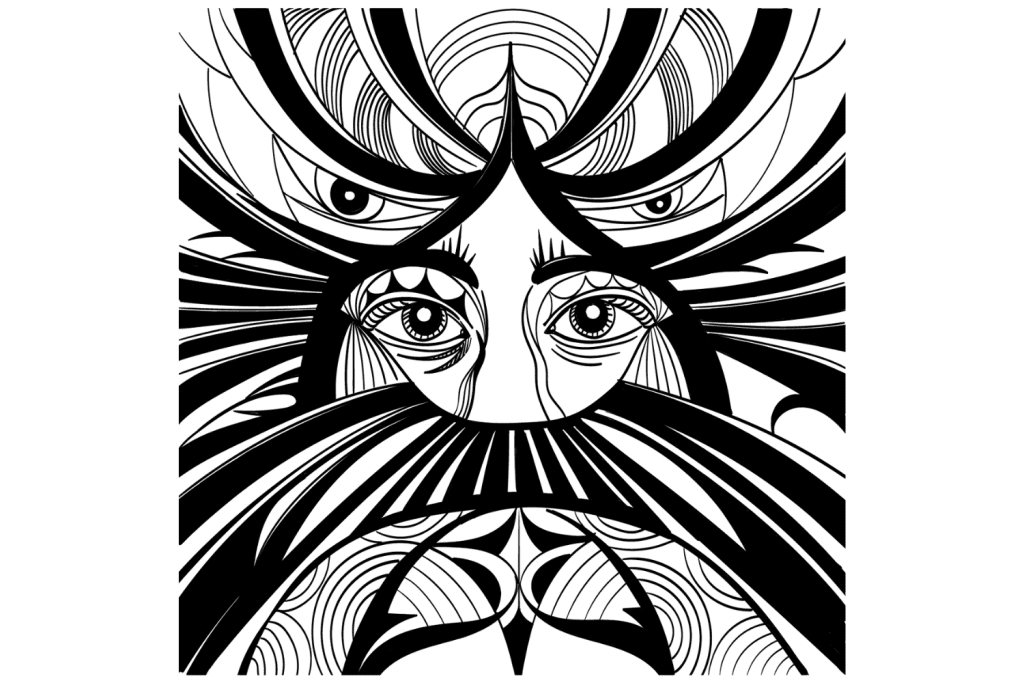
Even still, there are some temporary side effects you should be aware of when experimenting with psilocybin:
- Anxiety & paranoia
- Drowsiness
- Fatigue
- General stomach upset
- Increased heart rate & blood pressure
- Poor muscle coordination
- Nausea & vomiting
Generally, these side effects are more common in higher doses and are temporary, ceasing once the effects of the mushrooms have worn off.
What Exactly Are Migraines?
Migraines are a type of recurring headache that can leave you curled up in a dark room for days, trying to escape the throbbing pain and nausea.
They’re a complex neurological disorder characterized by moderate to severe pain, usually on one side of the head. They don’t present with visible symptoms, making it difficult for others to understand the severity of the condition.
The pain is often described as a pulsating or throbbing sensation that can vary from person to person. But it’s not just the physical pain that’s a problem — a migraine headache can also come with a host of other symptoms, including:
- Nausea
- Vomiting
- Sensitivity to light and sound
- Speech problems (transient aphasia)
- Changes in vision
These symptoms can last anywhere from 4 to 72 hours and can happen occasionally or several times a month.
There are different types of migraines, such as migraine with aura, migraine without aura, and chronic migraines.
A migraine with aura is characterized by visual disturbances such as flashing lights, zigzag lines, and blind spots before the headache begins.
In contrast, a migraine without aura doesn’t have those symptoms.
As for chronic migraine sufferers, they experience them on 15 or more days of the month for at least three months.
There are also subtype classifications of migraines, characterized by added symptoms such as:
- Vestibular migraine — includes dizziness or vertigo as the primary symptom
- Hemiplegic migraine — temporary weakness or paralysis on one side of the body before or during the headache
- Retinal migraine — temporary loss of vision in one eye before or during the headache
The exact cause of migraines is still a mystery, likely because there are many factors involved with their development.
Scientists believe it’s related to changes in the brainstem and its interactions with the trigeminal nerve, which is responsible for sensation in the face and head.
Other factors like stress, hormonal changes, certain foods, and environmental factors can also trigger migraines. This complexity makes it difficult to understand and explain the condition fully. And despite the high prevalence of migraines, research on the condition is still relatively limited, which can contribute to a lack of understanding of the condition.
What Are Current Migraine & Cluster Headache Treatments?
Migraines and cluster headaches are two of the most debilitating headaches people can experience. They can cause intense pain, nausea, and sensitivity to light and sound, making it hard for sufferers to function normally.
And while there’s no one-size-fits-all solution to treating migraines and cluster headaches, various options are available for managing the pain and other symptoms.
Migraine Treatments
Starting with migraines — the most common treatment for migraines is over-the-counter pain relievers such as ibuprofen, acetaminophen, and aspirin.
These medications can help to reduce the pain and other symptoms associated with a migraine headache. However, in some cases, these medications may not be enough to manage the pain, and a doctor may prescribe stronger medications such as triptans, ergotamines, and opioids.
Another option for treating migraines is preventative therapy, which aims to reduce the frequency and severity of migraines.
Migraine preventative therapies may include:
- Medications such as beta-blockers, anticonvulsants, and antidepressants
- Herbal supplements such as feverfew (Tanecetum parthenium)
- Lifestyle changes such as regular exercise, stress management techniques, and avoiding triggers such as certain foods or environmental factors.
Cluster Headache Treatments
Moving on to cluster headaches are considered one of the most painful types of headaches and are often referred to as “suicide headaches” due to the intense pain they cause.
They’re called “cluster” headaches because they tend to come and go in clusters lasting anywhere from 15 minutes to 3 hours — often several times per day.
Treatment options for cluster headaches include preventative medications such as:
- Dihydroergotamine
- Lithium
- Sumatriptan
- Verapamil
Now, onto a more exciting possible treatment for cluster headaches and migraine attacks — magic mushrooms.
Frequently Asked Questions
1. What Are Psilocybin Mushrooms?
Psilocybin mushrooms, also known as “magic mushrooms,” are a type of mushroom that contains a naturally-occurring entheogenic compound called psilocybin and psilocin.
Psilocybin is converted to psilocin inside the body. Psilocin then binds to specific receptors in the brain called serotonin receptors, specifically 5-HT2A receptors, to produce the mushroom’s psychoactive effects.
This binding causes changes in the activity of nerve cells in certain areas of the brain, leading the psychedelic effects like altering your perception of reality, changes in thoughts, feelings, and sensations, and can also cause hallucinations.
Magic mushrooms have been used for centuries in traditional healing practices and in religious ceremonies.
In more recent years, there’s been a growing interest in the potential therapeutic effects of psilocybin for treating various mental health conditions such as depression, anxiety, and post-traumatic stress disorder.
It’s currently being explored for use in legal psychedelic-assisted psychotherapy alongside LSD (lysergic acid diethylamide), ibogaine, DMT (dimethyltryptamine), and various other psychedelic compounds.
2. What Is Microdosing?
Microdosing is the practice of taking tiny amounts of a substance, typically a psychedelic drug, to enhance creativity, productivity, and overall well-being, rather than inducing a full-blown psychedelic experience.
This new trend has been gaining popularity recently, particularly among tech workers and entrepreneurs looking for a cognitive boost.
The concept of microdosing was popularized by Dr. James Fadiman, a psychologist and researcher, in his book The Psychedelic Explorer’s Guide.
Fadiman recommends taking very small, sub-perceptual doses of psychedelics, such as LSD or magic mushrooms, every three days. The idea is that by taking a sub-perceptual dose, you can tap into these drugs’ therapeutic benefits without getting high.
Proponents of microdosing claim that it can improve creativity, focus, and productivity and help with depression, anxiety, and PTSD.
But despite the anecdotal evidence, there isn’t enough solid scientific evidence to support the effects of microdosing.
3. What’s The Difference Between a Migraine & Cluster Headache?
Both migraines and cluster headaches are considered primary headache disorders (meaning there is no specific underlying cause or health disorder).
There are 5 main differences between migraines and cluster headaches:
- Location — Cluster headaches tend to appear on one side of the head around the eye socket and temples. Migraines also appear on one side of the head but tend to present more broadly from the front of the head to the back.
- Quality of pain — Migraine headaches present with a pulsing or throbbing pain, while cluster headaches are more of sharp or stabbing pain.
- Duration — Migraines can last anywhere from a few hours to a few days. Cluster headaches are much shorter-lasting, ranging from about 15 minutes to 3 hours in most cases.
- Frequency — Migraine headaches can come in cycles with periods of remission in between, but most attacks happen only once per day and last several hours. Cluster headaches also appear in cycles but are shorter lasting and can reappear several times in the same day.
- Other symptoms — Migraines are closely associated with other symptoms, such as nausea and vomiting. Cluster headaches often present with redness in one or both eyes, sweating or flushing, or nasal congestion.
The Takeaway: Psilocybin For Migraine Sufferers
The use of psilocybin (magic mushrooms) as a treatment for migraine sufferers is an area of ongoing research.
Studies have shown promising results in reducing migraine and cluster headache frequency and severity. However, we couldn’t find research specifically using micro-doses of psilocybin in these scenarios.
Despite the lack of research, many migraine sufferers are experimenting with their own micro-doses of mushrooms, with results that have helped to improve their conditions.
As the conversation around psychedelics and their therapeutic benefits continues to evolve, it may lead to new treatment options for those suffering from this condition and offer hope for a better quality of life.
Resources
- Schindler, E. A., Sewell, R. A., Gottschalk, C. H., Luddy, C., Flynn, L. T., Lindsey, H., … & D’Souza, D. C. (2021). Exploratory controlled study of the migraine-suppressing effects of psilocybin. Neurotherapeutics, 18(1), 534-543.
- Naito, Y., Ishii, M., Nagamine, A., Imagawa, A., Shida, K., Takahashi, J., … & Kiuchi, Y. (2010). Association of the A-1438G polymorphism in serotonin 2A receptor in migraine with aura among Japanese patients. Biological and Pharmaceutical Bulletin, 33(10), 1751-1753.
- Hasler, F., Grimberg, U., Benz, M. A., Huber, T., & Vollenweider, F. X. (2004). Acute psychological and physiological effects of psilocybin in healthy humans: a double-blind, placebo-controlled dose–effect study. Psychopharmacology, 172(2), 145-156.

